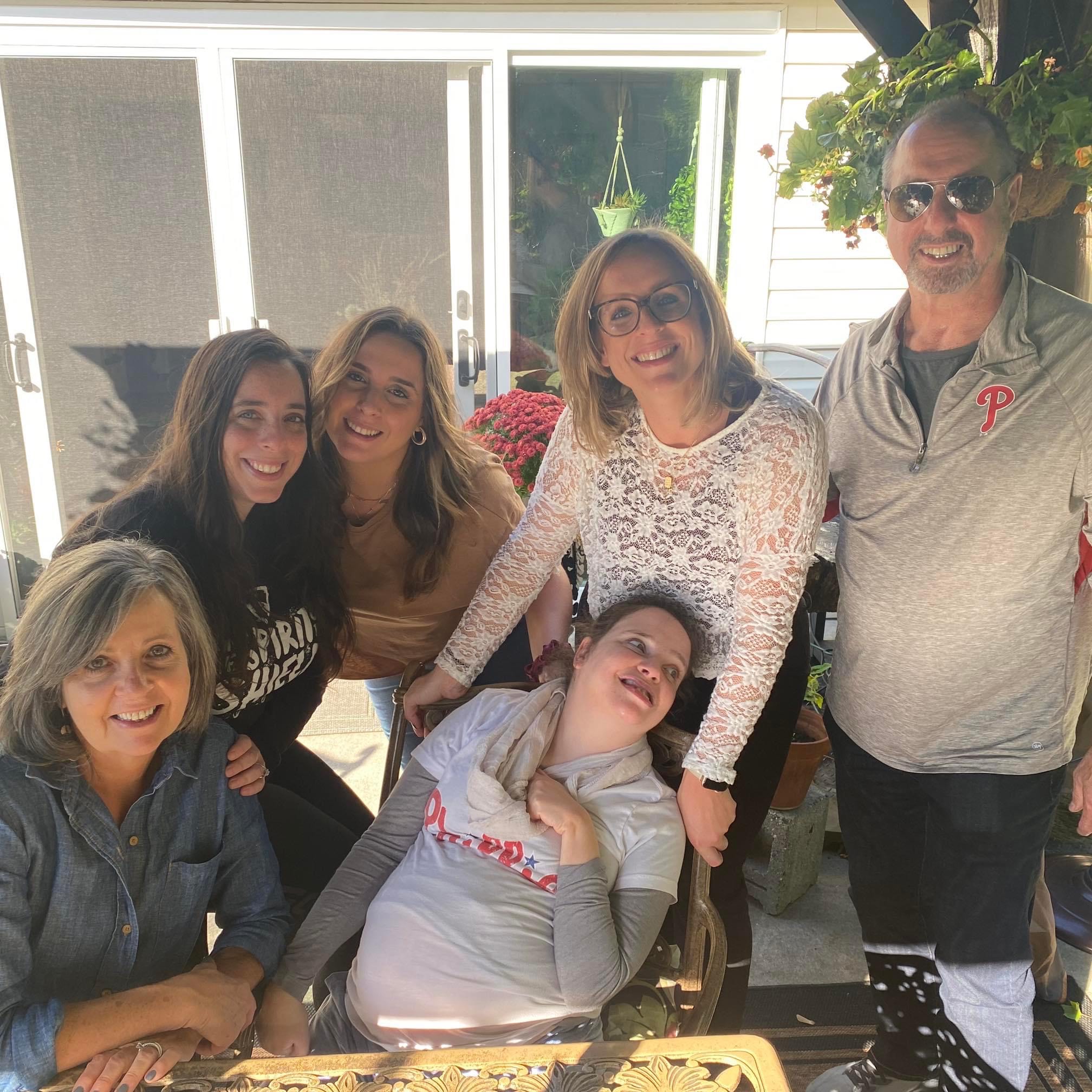 According to the International Rett Syndrome Foundation, Rett syndrome is a rare genetic neurological disorder that leads to severe impairments, affecting nearly every aspect of life. Rett syndrome particularly affects speech, purposeful hand use, and coordination, leaving individuals understanding more than they can communicate. The disorder is more common in women, though males have an earlier onset and more severe symptoms at birth.
According to the International Rett Syndrome Foundation, Rett syndrome is a rare genetic neurological disorder that leads to severe impairments, affecting nearly every aspect of life. Rett syndrome particularly affects speech, purposeful hand use, and coordination, leaving individuals understanding more than they can communicate. The disorder is more common in women, though males have an earlier onset and more severe symptoms at birth.
Salus University Occupational Therapy student Emily DiPhillipo ‘25OT has a personal connection to the cause and wants to amplify knowledge about the disorder, as October is Rett syndrome Awareness Month.
DiPhillipo’s sister, Nicole, was diagnosed and started showing symptoms of Rett syndrome at around seven months old, but her family struggled to find a correct diagnosis because of the lack of widespread knowledge of the disorder at the time. “Rett syndrome is a rare diagnosis that many people are unaware of,” said DiPhillipo. “Awareness and research are starting to increase; this year the first U.S. Food and Drug Administration (FDA) approved treatment came out to reduce the symptoms of Rett syndrome. That is a great step in the right direction, but there is much more research to be done to hopefully find a cure.”
 DiPhillipo emphasized that as aspiring healthcare professionals, many members of the Salus community can have a big impact on future awareness and the unique treatment of Rett syndrome patients. As an OT student herself, DiPhillipo recognized the role that OTs can play in treatment. “For a child with Rett syndrome, OTs can help the parents cope with their child having this disorder,” she said. “Teaching them what it is and the skills needed to help take care of the child. OTs can also assist with methods of transportation, medication management, and working on hand movement symptoms.”
DiPhillipo emphasized that as aspiring healthcare professionals, many members of the Salus community can have a big impact on future awareness and the unique treatment of Rett syndrome patients. As an OT student herself, DiPhillipo recognized the role that OTs can play in treatment. “For a child with Rett syndrome, OTs can help the parents cope with their child having this disorder,” she said. “Teaching them what it is and the skills needed to help take care of the child. OTs can also assist with methods of transportation, medication management, and working on hand movement symptoms.”
Extending to the other academic disciplines at Salus, Speech-Language Pathologists (SLPs), Physician Assistants (PAs), Optometrists, and Orthotics and Prosthetics (O&P) professionals also can play a role in treatment.
SLPs can assist with communication, specifically helping to support and develop the communication skills of individuals with Rett syndrome and providing education/training to their communication partners. The use of Alternative and Augmentative Communication devices can also be helpful for some individuals with Rett syndrome.
Since PAs work across medical specialties, those working in pediatrics or primary care may be the first to detect signs of Rett syndrome as children develop. Additionally, patients with Rett syndrome have symptoms and health problems across multiple organ systems, so PAs may also work with these patients in areas of medicine such as cardiology, pulmonology, gastroenterology, neurology and genetics to help directly manage the care related to their individual manifestations of the disease.
DiPhillipo’s sister Nicole has glasses, so she sees an optometrist often. DiPhillipo emphasized the importance of optometrists being aware of Rett syndrome, and making exams accessible for patients.

Nicole has also benefited from the services of O&P professionals, as she uses leg braces to walk with assistance. Orthoses such as leg, feet and arm braces can be helpful for individuals with Rett syndrome.
The message DiPhillipo hopes to send to Salus students and healthcare professionals this month is the impact they can have on families with a loved one with Rett syndrome. Being well-educated on resources, treatments, and taking the initiative to help parents and families is crucial. “For families, this is a very hard thing to go through at first,” said DiPhillipo. “I think it is important for parents to reach out to others to get information and join support groups, there are a lot of resources out there. The diagnosis can be overwhelming for families, so I think as healthcare providers, having resources for families can go a long way.”